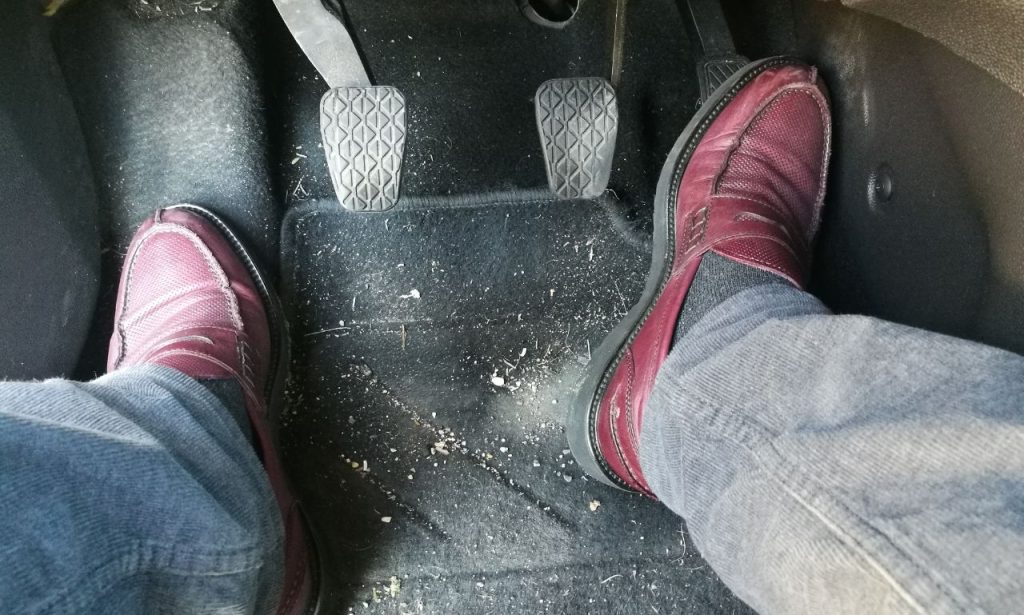Have you ever found yourself gripping the steering wheel a little tighter, not just because of traffic, but because your feet are unusually warm? If you’re wondering, “why do I feel heat on my feet while driving,” you’re not alone. Many drivers experience this discomfort, which can range from mildly annoying to downright distracting. Understanding the underlying causes is the first step toward finding a solution that ensures your driving experience remains comfortable and safe.
Common Causes of Heat on Feet While Driving
Feeling heat on your feet while driving can be attributed to several factors, both mechanical and environmental. Let’s delve into the most common causes.
Exhaust System Issues
One of the primary culprits behind warm feet is a malfunctioning exhaust system. If there are leaks or damage in the exhaust pipes, excessive heat can escape into the cabin, particularly near the footwell area. This not only makes your feet uncomfortable but can also pose a safety hazard due to the presence of harmful gasses like carbon monoxide. Regular inspection and maintenance of your vehicle’s exhaust system are crucial to prevent this issue.
Hot Engine Components

Your engine generates a significant amount of heat, which is usually well-managed by your vehicle’s cooling system. However, if certain engine components overheat, this heat can radiate through the floor of the car, warming your feet. Components such as the radiator, alternator, or power steering pump, if malfunctioning, can contribute to increased cabin temperature near your feet.
Poor Ventilation
Inadequate airflow within the vehicle can lead to hotspots, especially around the footwells. If your car’s ventilation system isn’t circulating air properly, warm air can stagnate around your feet. This can be due to blocked vents, a failing fan, or simply the design of the vehicle’s interior. Ensuring that vents are clear and functioning can significantly improve air circulation and reduce heat buildup.
Faulty HVAC Systems
A malfunctioning Heating, Ventilation, and Air Conditioning (HVAC) system can disrupt the balance of temperature inside your car. If the HVAC system is stuck in heating mode or isn’t distributing air evenly, you might notice excessive warmth near your feet. Regular maintenance of the HVAC system, including checking refrigerant levels and ensuring all components are working correctly, can help maintain a comfortable cabin temperature.
Insulation Problems
Proper insulation in your vehicle helps maintain a consistent internal temperature by blocking external heat sources. If the insulation around the floor or doors is compromised, external heat can seep into the cabin, particularly near your feet. Inspecting and repairing any insulation issues can help keep the interior temperature stable and comfortable.
Potential Vehicle-Related Complaints
Several vehicle-related issues can indirectly cause heat to accumulate in the footwell area. Being aware of these symptoms can help you address underlying problems before they escalate.
Squealing Belts
Squealing belts, such as the serpentine or timing belts, can be more than just an annoyance. Overheating belts can transfer heat to nearby areas, including the engine bay and footwells. If you hear squealing noises, it’s essential to have your belts inspected and replaced if necessary to prevent heat-related discomfort and potential engine damage.
Grinding Sounds
Grinding noises from the engine or transmission can indicate excessive friction, which generates heat. This additional heat can contribute to the overall temperature inside the cabin, making your feet feel warmer than usual. Promptly addressing grinding sounds by consulting a mechanic can help maintain your vehicle’s performance and cabin comfort.
Unusual Noises from the Engine
Any unusual noises emanating from the engine, such as knocking or hissing, could signal overheating components or fluid leaks. These issues can directly impact the temperature inside your car, especially around the footwell area. Regular engine maintenance and addressing unusual noises immediately can prevent heat buildup and ensure a smoother driving experience.
Effects of Foot Positioning
Your seating and foot positioning play a significant role in how heat is distributed within the car’s cabin. Let’s explore how these factors can influence the temperature around your feet.
Improper Seating Posture
Sitting too close to the pedals or leaning forward excessively can restrict airflow around your feet, causing heat to accumulate. Additionally, poor posture can impede proper circulation, making your feet feel warmer. Adjusting your seat to ensure a comfortable distance from the pedals and maintaining an upright posture can enhance airflow and reduce heat buildup.
Extended Periods of Driving
Long drives can naturally lead to increased cabin temperatures, especially in climates with high ambient temperatures. Prolonged exposure to heat can make your feet feel uncomfortable, even if the vehicle’s ventilation is functioning correctly. Taking regular breaks, using seat covers with better breathability, and maintaining an optimal interior temperature can help mitigate this issue.
Personal Health Factors

Your personal health and physiological responses can also influence how you perceive heat on your feet while driving. Factors such as circulation, footwear, and underlying medical conditions play a role.
Circulation Issues
Poor circulation in your legs and feet can make you more sensitive to heat, exacerbating the feeling of warmth while driving. Conditions like peripheral artery disease or diabetes can affect blood flow, making your feet more prone to overheating. Consulting with a healthcare professional can provide strategies to improve circulation and reduce discomfort.
Footwear Choices
Wearing tight or non-breathable footwear can trap heat and increase the sensation of warmth in your feet. Opting for breathable shoes or driving barefoot can significantly reduce heat buildup.
Underlying Medical Conditions
Certain medical conditions, such as hyperthyroidism or neuropathy, can affect how your body regulates temperature, leading to increased heat sensitivity in your feet. If you suspect a medical condition is contributing to this issue, it’s essential to seek advice from a healthcare provider.
Conclusion
Experiencing heat in your feet while driving can be a source of discomfort and distraction, potentially impacting your driving safety. By understanding the various causes—from mechanical issues like an overheating exhaust system to personal factors such as circulation—you can take proactive steps to mitigate the problem. Regular vehicle maintenance, proper seating adjustments, and attention to your personal health are key to ensuring a comfortable and safe driving experience. If the issue persists despite your efforts, consulting with a professional mechanic or healthcare provider is advisable to address any underlying concerns.
ALSO READ: Which Driver App Pays the Most?
FAQs
Yes, a damaged exhaust system can cause reduced engine performance, increased emissions, and pose safety risks due to potential carbon monoxide leaks.
It’s recommended to have your HVAC system serviced at least once a year, or more frequently if you notice any issues with heating or cooling.
Breathable, loose-fitting shoes such as loafers or driving shoes are ideal as they allow better airflow and prevent heat from being trapped around your feet.
Symptoms of poor circulation include persistent coldness, numbness, tingling, or a burning sensation in the feet. Consulting a healthcare professional can help diagnose and treat circulation issues.
While driving barefoot can improve airflow and reduce heat, it’s essential to ensure you can still effectively operate the pedals without discomfort. If barefoot driving affects your control, consider breathable footwear instead.




